EGYPTOLOGY: Egyptian Oases Part #3 - Fayoum Oasis
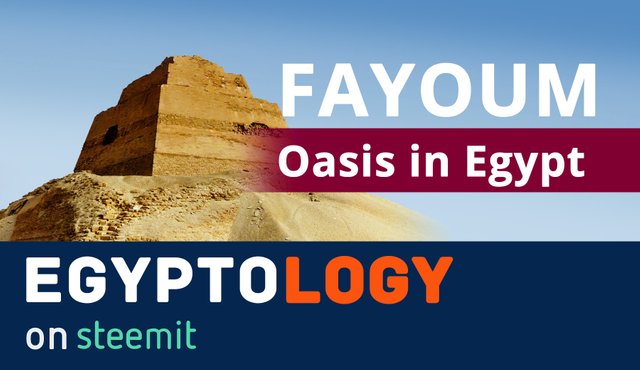
In my third and - at least for now - next-to-last part of the adventurous journey through the Egyptian oases, you will experience now one of the most beautiful and fertile spots in the desert: the Fayoum Oasis. Famous for huge water wheels and an amazing, incomparable landscape, this is the largest of all oases in the western desert (or - it depends from where you look at it: in the eastern Sahara). Its historical records from the pharaonic times are the same fascinating as of the area along the Nile.
Just a short reminder – if you are interested in the other articles regarding Dakhla Oasis, Kharga Oasis and its historical sites just click here:
• Egyptian Oases Part #1 - Dakhla Oasis
• The Temple of Deir el Haggar in Dakhla Oasis
• Egyptian Oases Part # 2 - Kharga Oasis
• The Temple of Hibis in Kharga Oasis
A Unique Place
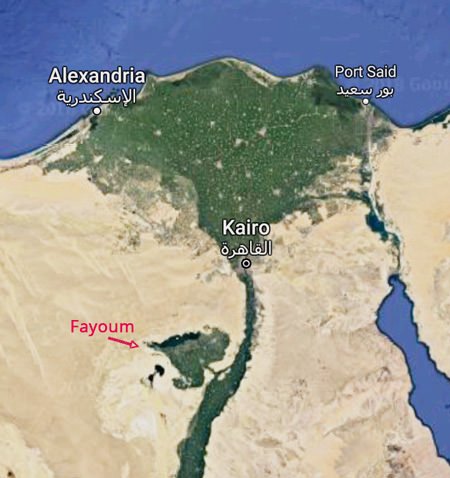
As most people probably don't know: this quite big area with more than 300.000 inhabitants is the only oasis in Egypt that is getting its water supply not from groundwater but from the Nile! So the connection through a huge Nile branch the Joseph Canal made Fayoum one of the most favourable places to live - in Antiquities and also today. Fayoum belongs to the Al-Fayoum Governate and is bordered in the north by a lake named Birkat al-Qarun.
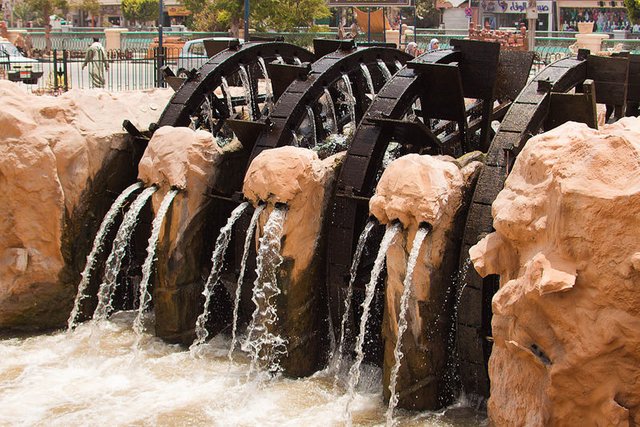
Wadi al-Hitan
At the western border of Fayoum, there is a huge area called Wadi al-Hitan ("Valley of the Whales") – which is famous for its fossils and fascinating remains of prehistoric whales and other large (extinct) species. It is part of the Wadi El-Rayyan National Park and on the UNESCO World Heritage List. The Valley cannot be explored by car because too much damage was already made to the fossils when vehicles drove over it.
On an area of around 8 square kilometres, you can see skeletons of more than 1000 whales, sharks and the remains of corals and shells. It is barely imaginable how this could be - in the desert? But 40 million years ago this area was flooded by the so-called Tethys Ocean. But later on, tectonical powers raised the plateau up and pushed the sea away. The remains of this amazing underwater ecosystem are now silent witnesses of these huge geological and geographical transformations.
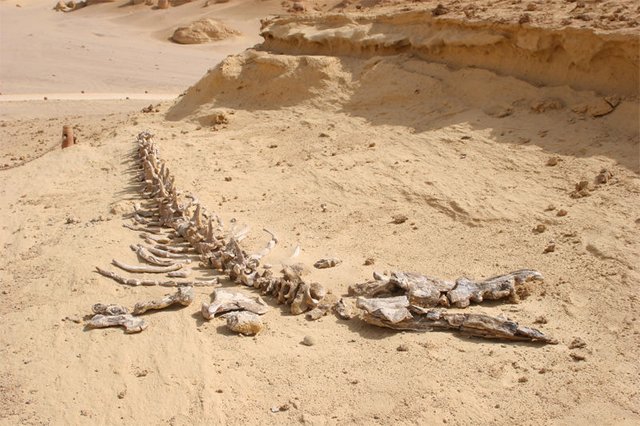
Pyramids
The Fayoum Oasis has more fascinating monuments: Pyramids! Did you know that Pharao Amenemhet III built the so-called Hawara-Pyramid? It is, of course, not as huge as the Great Pyramid of Giza in Cairo, but not less interesting. It was constructed as a tomb for the Pharao in the Middle Kingdom (around 2137 to 1781 BCE) because his first attempt to build a similar monument failed. Remains of the so-called Black Pyramid of Amenemhet III in Dahshur are still visible today. With the Hawara-Pyramid the Pharao was finally successful.
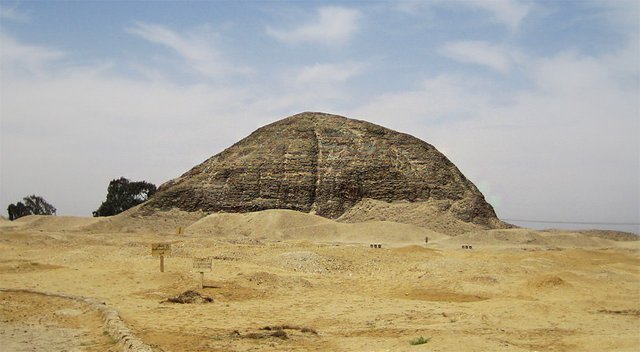
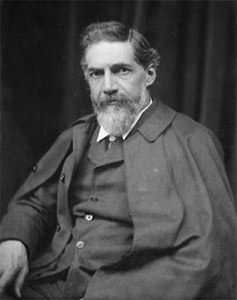
Another pyramid was built by Senowseret II in Ilahun, a spot at the entrance to the oasis. His pyramid can barely be identified as such one anymore because only the core made of limestone and covered with mudbricks is still visible. If you don't know that this was once a huge pyramid you probably would miss it by passing by. ;) The reason that we can't see the original limestone cladding anymore that gave the pyramid once its unique shape is because people in antiquities already removed it. The material was precious and especially the cover stones were burnt to be used as a fertilizer fo agriculture or simply as building material for other facilities.
The Senowseret II pyramid was first discovered around 1798–1801 by Dominique-Vivant Denon during an expedition. And then again it was Sir William Flinders Petrie who systematically excavated the remains not only of the pyramid but also of the discovered pyramid city named "Kahun" in the vicinity of the monument.
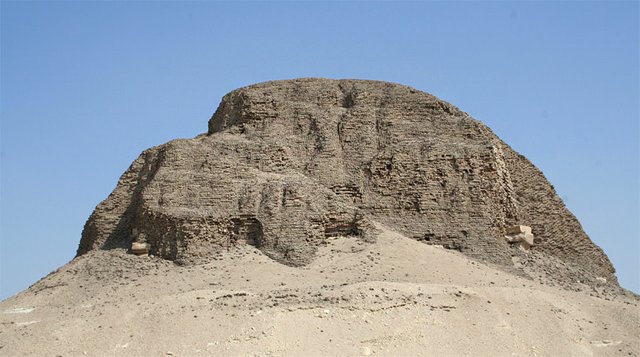
Fayoum Portraits
Another very unique phenomenon that I already mentioned in one of my posts before is the "invention" of the so-called Fayoum Portraits. These are paintings of deceased people applied on cartonnage that functioned as mummy masks. This style of an "identification label" dates back to the Greco-Roman period.
It is assumed that only wealthy people could afford such a portrait and we still don't know for sure if the portraits were made already within the lifespan of a person or right after the death. This seems mysterious especially in the cases of small children that received beautiful, artistic portraits. The pictures were put on the coffins or in some cases being wrapped within the mummy. Today we have a huge variety of portraits on display in many museums all originate from Fayoum showing men, women and children of all ages. They are so realistically drawn that we can still get a clue of the appearance of the deceased person in the coffin or mummy.
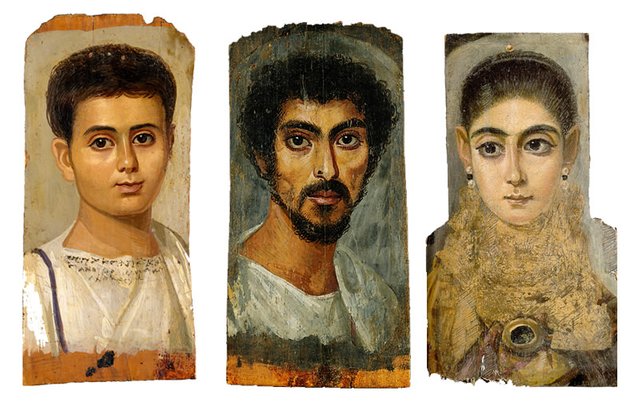
THANK YOU FOR READING!
In my very last part of the oases-tour you will get very exclusive insights into a not so well known but nevertheless great monument: the Lion Temple of Medinet Madi in Fayoum. Stay tuned! ;)
Sources:
• http://www.spiegel.de/wissenschaft/natur/evolutionsraetsel-wale-in-der-wueste-a-720524.html
• https://web.archive.org/web/20141019153432/http://www.fossilien-journal.de/cms/red/download/03_08_Palaeo_Gesellschaft.pdf
• Ägypten, Wüsten und Oasen, Travel Guide, edited by DDB Travel & Tourism Paris, 2006.
• Arnold, Dieter, Das Labyrinth und seine Vorbilder, in: MDAIK 35, 1979, pp. 1–9.
• Arnold, Dieter, Die Pyramide Sesostris’ II. bei El-Lahun, in: Sokar 32, 2016, pp. 52–65.
• Stadelmann, Rainer, Die ägyptischen Pyramiden, Mainz 1991, pp. 246–249.
• https://de.wikipedia.org/wiki/Sesostris-II.-Pyramide
• https://de.wikipedia.org/wiki/Wadi_al-Hitan
• https://www.metmuseum.org/press/exhibitions/2000/ancient-faces-mummy-portraits-from-roman-egypt
Images:
• Image used in the editorial picture (Meidum Pyramid): Source
• Pict. 1: Google Maps, edited by the author.
• Pict. 2: Source
• Pict. 3: Source
• Pict. 4: Source
• Pict. 5: Source
• Pict. 6: Source
• Pict. 7: Source
• Pict. 8: Source
• Pict. 9: Source
Feel free to ask all the question of what you always wanted to know about Ancient Egypt. That’s my job and my passion. Let’s discuss your thoughts and ideas.

If you liked this article, please follow me on my blog @laylahsophia. I am a German Egyptologist writing about ancient and contemporary Egypt, history of science, philosophy and life.
Since the building of the pyramids was so impressive at that time, it is sorta sad to see them damaged this much.
Edit: Forgot to say I love your post! Following
Thank you so much!
Yes it is sad, but we must keep in mind, that the destruction already begun in the antiquities time, Same happened to the Great Pyramid in Giza - it once was covered completely with solid white limestone plates.
Very nice post, more people should write about ancient Egypt there are alot disinformation and people don't know the whole truth most believe that slaves build the Pyramids.
looking forward to your next post about Egypt. :)
Thank you for your kind words! A new post is already in the making. :)
I'm in awe of your work, and I'm learning so much from you! This is the first time I've ever heard about the mummy portraits, and I find it very interesting. I will also add these pyramids to my research list. Thank you for your valuable information!
You are very welcome! :)
Thank you for your nice words.
excellent post. I really find the mummy portraits very fascinating, it makes me proud to know that civilization started in Africa
Yes, Africa is such an amazing continent with rich cultures!
exactly
I have read all what you write and I have many questions I want to ask but I do not know may ask here but I want to know in what way I can find more detailed information about this event .. i am really interested in this problem . please help me. because i live very far away and can not to mesir.apa there is a book that talk about this .. please give me the title of the book and who is the author @laylahsophia
Sorry, I dont' understand your questions. Can you explain?
I am interested in your writing .. i want to learn more deeply..what you want to help me
Hola, soy amante de la egiptologia, sobre todo del tema de faraones y pirámides, el tema expuesto es super interesante y me ha brindado nuevos conocimientos, éxitos.
Congratulations @laylahsophia! You have completed some achievement on Steemit and have been rewarded with new badge(s) :
Click on any badge to view your own Board of Honor on SteemitBoard.
For more information about SteemitBoard, click here
If you no longer want to receive notifications, reply to this comment with the word
STOP